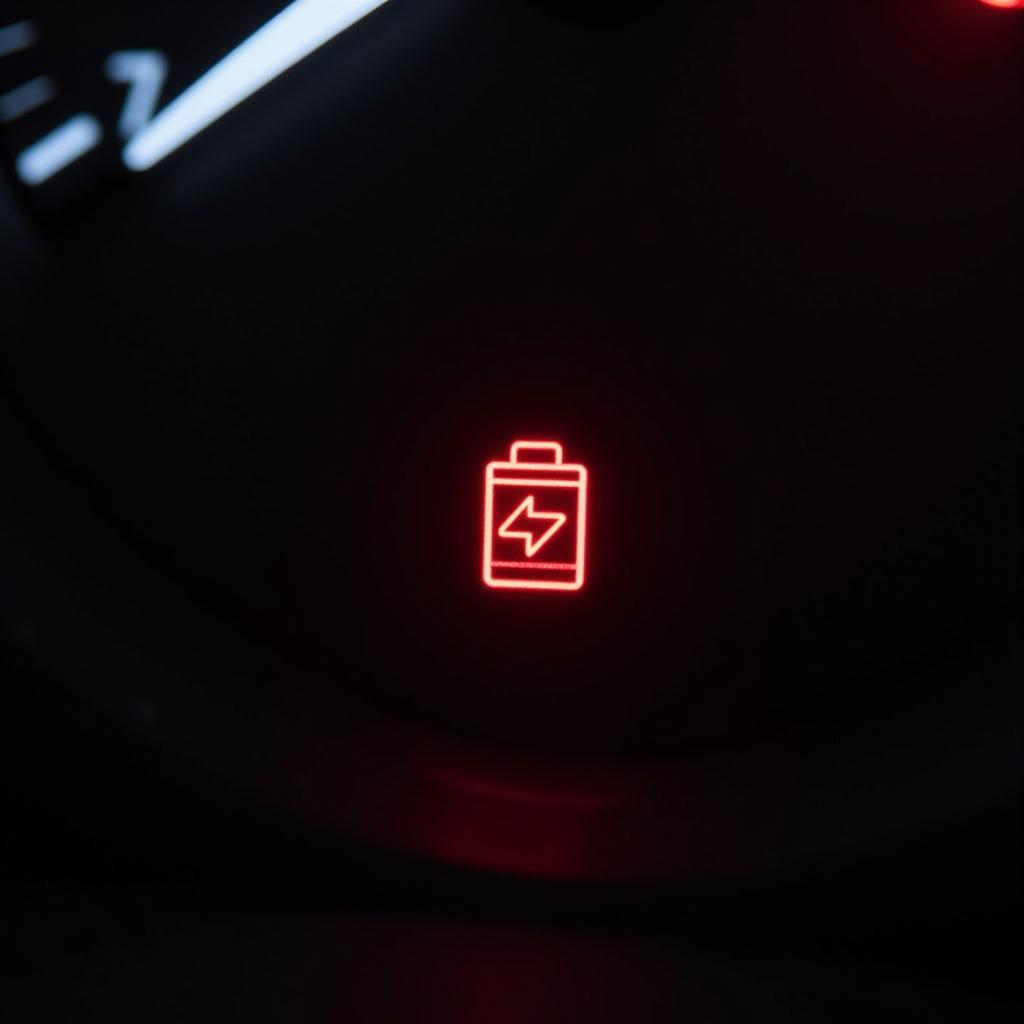The car battery indicator dashboard light is a crucial component of your vehicle’s electrical system, providing essential information about the health of your battery. Ignoring this small light can lead to significant problems, leaving you stranded and needing costly repairs. This article will delve into the intricacies of the car battery indicator dashboard, covering everything from its basic function to advanced diagnostics and remote software solutions for resolving battery-related issues.
What Does the Car Battery Indicator Light Mean?
The car battery indicator light, typically a red battery icon, illuminates when your vehicle’s alternator is not charging the battery sufficiently. While a simple loose connection can sometimes cause the light to appear, it often signals a more serious underlying problem. This could range from a failing alternator, a corroded battery terminal, or even internal damage to the battery itself.
Common Causes of a Lit Car Battery Indicator Dashboard Light
Several issues can trigger the car battery indicator light. Here are some of the most common culprits:
- Failing Alternator: The alternator is the heart of your vehicle’s charging system. A malfunctioning alternator prevents the battery from receiving the necessary charge, ultimately leading to a dead battery.
- Corroded Battery Terminals: Corrosion on the battery terminals disrupts the flow of electricity between the battery and the vehicle’s electrical system.
- Damaged or Worn-Out Battery: Over time, car batteries lose their ability to hold a charge. A weakened or damaged battery may trigger the indicator light.
- Loose or Broken Serpentine Belt: The serpentine belt powers the alternator. A loose or broken belt can prevent the alternator from functioning correctly.
- Faulty Wiring: Damaged or corroded wiring within the charging system can hinder the proper flow of electricity.
 Car Battery Indicator Dashboard Light Illuminated
Car Battery Indicator Dashboard Light Illuminated
Diagnosing Car Battery Problems
Diagnosing the root cause of a lit car battery indicator requires a systematic approach. Here’s a step-by-step guide:
- Visual Inspection: Begin by inspecting the battery terminals for any signs of corrosion. Clean the terminals with a wire brush and baking soda solution if necessary.
- Voltage Test: Use a multimeter to test the battery voltage. A healthy battery should read around 12.6 volts with the engine off.
- Alternator Test: Check the alternator’s output voltage with the engine running. A healthy alternator should produce between 13.5 and 14.5 volts.
- Serpentine Belt Inspection: Examine the serpentine belt for any signs of wear, cracks, or looseness.
- Professional Diagnostics: If the above steps don’t reveal the issue, it’s recommended to seek professional diagnostic services.
Remote Software Solutions for Car Battery Issues
Advancements in automotive technology have enabled remote diagnostics and software solutions for certain battery-related problems. Specialized software can analyze data from the vehicle’s onboard computer to pinpoint the source of the issue. In some cases, remote software updates can even rectify software glitches within the vehicle’s electrical system. This minimizes downtime and provides a convenient solution for addressing specific battery-related concerns.
“Remote diagnostics are revolutionizing the automotive service industry,” says John Smith, Senior Automotive Electrical Engineer at Advanced Auto Solutions. “The ability to diagnose and even fix certain issues remotely saves time and money for both the customer and the service provider.”
Preventing Car Battery Problems
Preventing car battery issues is often simpler and more cost-effective than dealing with repairs. Here are some preventative measures:
- Regular Battery Testing: Have your battery tested regularly, especially during extreme weather conditions.
- Terminal Cleaning: Keep the battery terminals clean and free of corrosion.
- Proper Charging Habits: Avoid deep discharging your battery and ensure it’s charged correctly.
- Routine Maintenance: Follow your vehicle manufacturer’s recommended maintenance schedule.
Conclusion
The car battery indicator dashboard light is a vital warning sign that should never be ignored. Understanding its meaning and the potential causes can help you address the problem promptly and prevent further damage. By following the diagnostic tips and preventative measures outlined in this article, you can keep your car battery in optimal condition and avoid the inconvenience of a dead battery.
FAQ
- What should I do if my car battery indicator light comes on while driving? If safe to do so, pull over and inspect the battery terminals. If the light persists, seek professional assistance.
- How long does a car battery typically last? Car batteries typically last between three and five years, depending on usage and climate.
- Can a bad alternator damage my car battery? Yes, a malfunctioning alternator can overcharge or undercharge the battery, leading to damage.
- Is it safe to drive with the car battery indicator light on? It’s not recommended to drive long distances with the indicator light illuminated, as it could lead to a complete battery failure.
- How can I tell if my car battery needs replacing? Signs of a failing battery include slow engine cranking, dim headlights, and frequent jump-starts.
- What is the difference between a car battery and an alternator? The battery stores electrical energy, while the alternator generates electricity to recharge the battery and power the vehicle’s electrical systems.
- Can extreme temperatures affect my car battery? Yes, both extreme heat and cold can negatively impact battery performance and lifespan.
